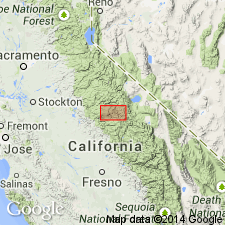
- Usage in publication:
-
- Half Dome quartz monzonite*
- Modifications:
-
- Original reference
- Dominant lithology:
-
- Quartz monzonite
- AAPG geologic province:
-
- Sierra Nevada province
Summary:
Pg. 126, map. Half Dome quartz monzonite of Tuolumne intrusive series. Named proposed by H.W. Turner in unpublished manuscript. Medium-grained light-gray rock; contains nearly equal amounts of biotite and hornblende. Chiefly nonporphyritic, but in part obscurely porphyritic. Included in Tuolumne intrusive series, in which it is next younger than Sentinel granodiorite, and next older than Cathedral Peak granite. Occurs at head of Yosemite Valley, in all of Tenaya Canyon, Little Yosemite, and all domes surrounding them, Half Dome being most prominent. Age is probably Cretaceous.
Named from fact that it composes Half Dome, in Yosemite National Park, CA.
Source: US geologic names lexicon (USGS Bull. 896, p. 896); supplemental information from GNU records (USGS DDS-6; Menlo GNULEX).
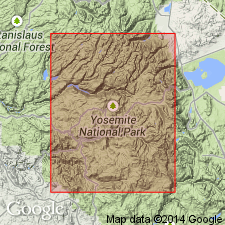
- Usage in publication:
-
- Half Dome quartz monzonite*
- Modifications:
-
- Geochronologic dating
- AAPG geologic province:
-
- Sierra Nevada province
Summary:
K-Ar ages on biotite of Half Dome quartz monzonite on samples (location shown on sketch map) yielded from 85 to 83.4 (+/-1 to 2%) Ma with average of 84.1 Ma. Younger than Sentinel granodiorite (88.4 Ma) and older than Cathedral Peak granite (83.7 Ma).
Source: GNU records (USGS DDS-6; Menlo GNULEX).
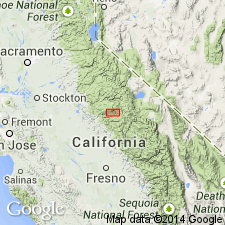
- Usage in publication:
-
- Half Dome quartz monzonite*
- Modifications:
-
- Age modified
- AAPG geologic province:
-
- Sierra Nevada province
Summary:
Described as lighter-colored and more uniform in both color and texture than Sentinel granodiorite; its potassium feldspar, though only about half as abundant as plagioclase, is more conspicuous because in larger crystals. Porphyritic facies exposed near Lake Tenaya. Has K-Ar age of 84.1 Ma. [Age of Half Dome Quartz Monzonite changed from Cretaceous(?) to Cretaceous]
Source: GNU records (USGS DDS-6; Menlo GNULEX).
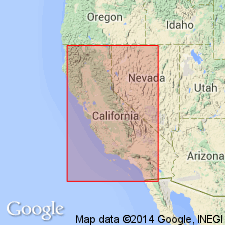
- Usage in publication:
-
- Half Dome Quartz Monzonite*
- Modifications:
-
- Age modified
- Geochronologic dating
Summary:
"Age of Half Dome Quartz Monzonite revised from Cretaceous to Late Cretaceous based on Pb alpha age of 88 Ma on uranothorite (Jaffe and others, 1959, USGS Bull 1097-B)"
Source: GNU records (USGS DDS-6; Menlo GNULEX).
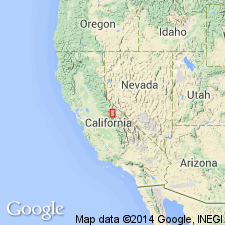
- Usage in publication:
-
- Half Dome Granodiorite*
- Modifications:
-
- Redescribed
- AAPG geologic province:
-
- Sierra Nevada province
Summary:
Half Dome Quartz Monzonite (Calkins, 1930) renamed Half Dome Granodiorite because it is predominantly granodiorite. Age of Tuolumne Intrusive Series is early Late Cretaceous (Evernden and Kistler, 1970, p.17).
Source: GNU records (USGS DDS-6; Menlo GNULEX).

- Usage in publication:
-
- Half Dome Granodiorite*
- Modifications:
-
- Revised
- AAPG geologic province:
-
- Sierra Nevada province
Summary:
Mapped in N part of Merced Peak 15' quad, porphyritic facies shown separately. Name Tuolumne Intrusive Series changed to Tuolumne Intrusive Suite [see recommendation by Sohl (1977) in which "suite" is proposed as term of group rank, adopted as Art 10(i) in Code]. Suite includes (older to younger) granodiorite of Grayling Lake, granodiorite of Kuna Crest, granite of Marie Lakes, Half Dome Granodiorite, Cathedral Peak Granodiorite and [Johnson Granite Porphyry]. Age is Late Cretaceous.
Source: GNU records (USGS DDS-6; Menlo GNULEX).
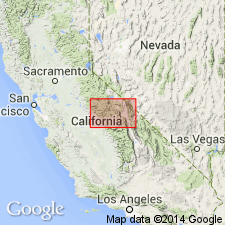
- Usage in publication:
-
- Half Dome Granodiorite*
- Modifications:
-
- Overview
- AAPG geologic province:
-
- Sierra Nevada province
Summary:
Map differentiates between megacrystic and equigranular facies. In most places contact is gradational between 2 facies except in area 2 km N of Tenaya Lake extending 6 km where contact is sharp. Half Dome Granodiorite intrudes marginal rocks of Tuolumne Intrusive Suite; is intruded by Cathedral Peak Granodiorite. Although not dated by U-Pb method, concordant U-Pb ages of 91 and 88 Ma on granodiorite of Kuna Crest, 88 Ma on tonalite of Glen Aulin, and 86 Ma on Cathedral Peak Granodiorite bracket its age closely.
Source: GNU records (USGS DDS-6; Menlo GNULEX).
For more information, please contact Nancy Stamm, Geologic Names Committee Secretary.
Asterisk (*) indicates published by U.S. Geological Survey authors.
"No current usage" (†) implies that a name has been abandoned or has fallen into disuse. Former usage and, if known, replacement name given in parentheses ( ).
Slash (/) indicates name conflicts with nomenclatural guidelines (CSN, 1933; ACSN, 1961, 1970; NACSN, 1983, 2005, 2021). May be explained within brackets ([ ]).

